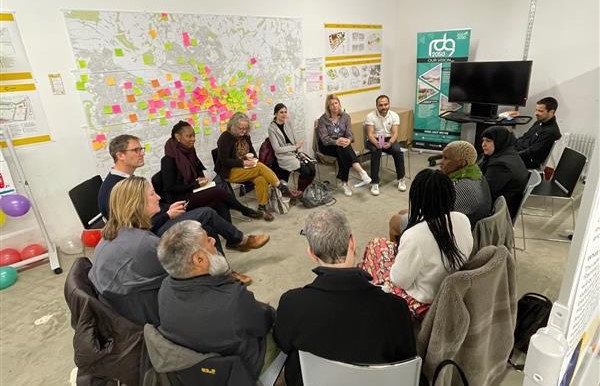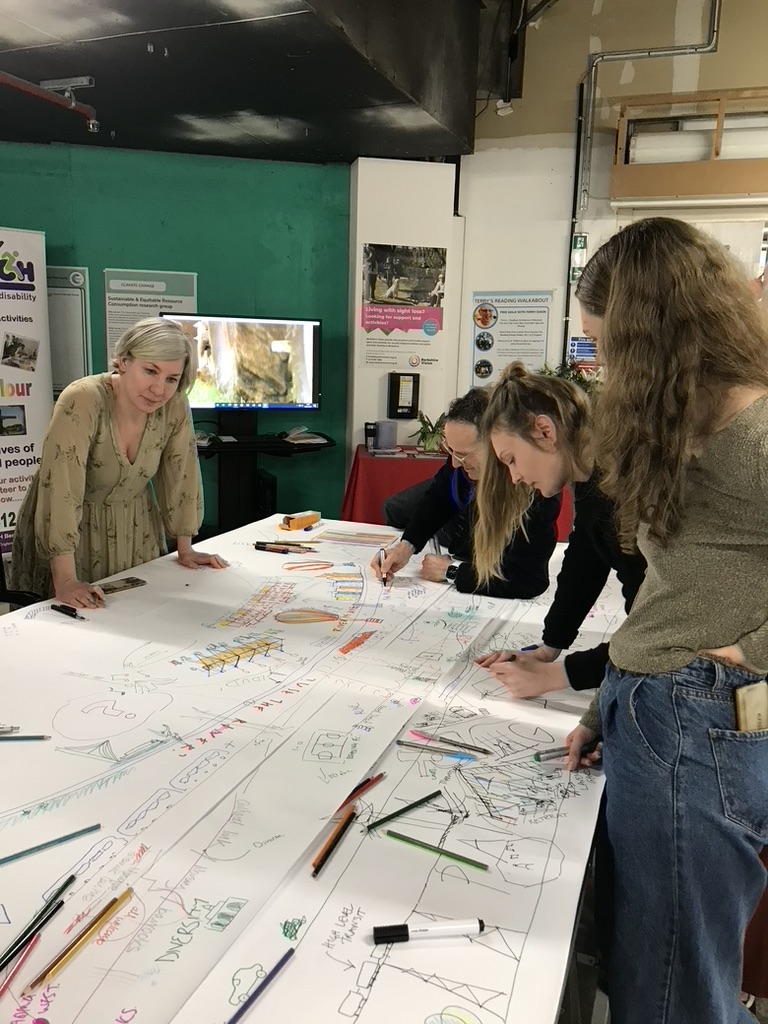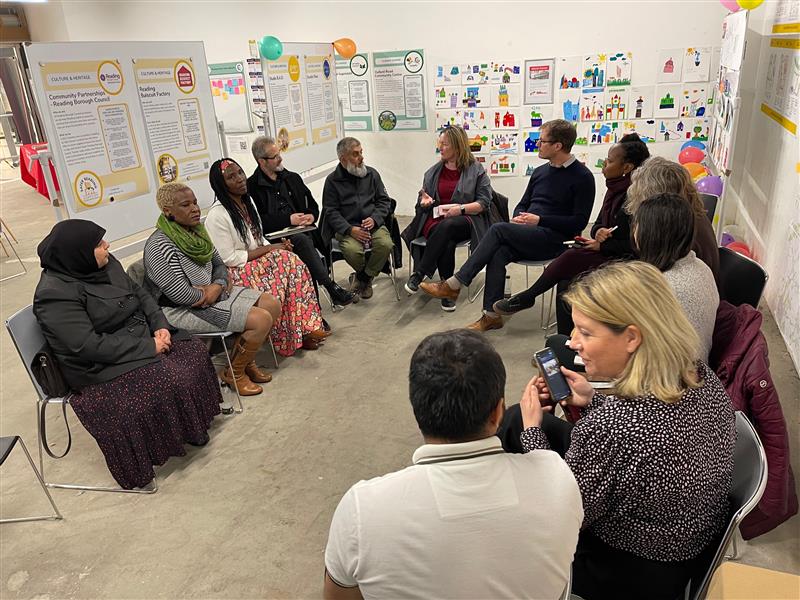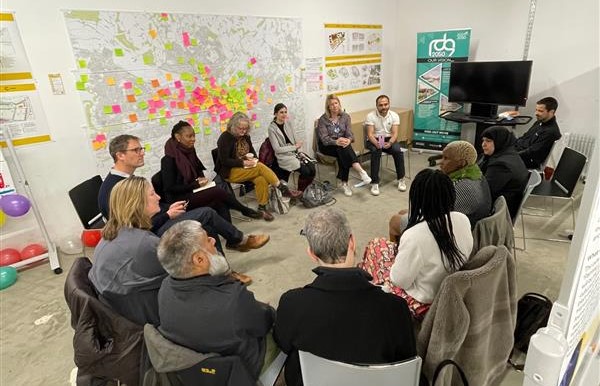Reading Architecture Professor Lorraine Farrelly has spent the past month running ‘Your Place, Our Place’, a pop-up space for the local community to come together to shape the planning of their town. Here she tells us more about the initiative, which is part of a major UK-wide research project, and how learnings from it will ultimately feed into a more democratic urban planning process.

The process of setting up and running ‘Your Place Our Place’ in Reading, including a new pop-up community space or ‘urban room’ in the Broad Street Mall, has clearly shown that communities want to be part of a space to host their conversations and discussions about their town. In a few months, over 60 organisations have come forward to be part of the space in some way.
While the initiative is linked to the broader, UK-wide Community Consultation for Quality of Life (CCQOL) research project, led by my Reading colleague Professor Flora Samuel, the urban room has shown that there is a great deal of local community interest and pride in their town. We had over 40 posters from local groups describing what they do – from organisations passionate about the environment, such as Ethical Reading, to community support groups. Others held discussions and contributed to our programme of community-focused events.
Throughout March 2022, 61 events took place, such as a session on sight health awareness run by Berkshire vision and another on ‘NHS net zero public engagement’ with the Royal Berkshire Hospital.

Recently, Reading has benefitted from the £95 million government-funded High Streets Heritage Action Zone programme, which is being delivered by Historic England. The town is using this funding to encourage local community groups to work with artists to encourage local communities to redefine their high streets and public spaces.
Our urban room was in a shopping centre which is run by the Moorgarth Group, the developer which refurbished the 1960s mall. They have focused on local communities and have several other community groups and community facilities in the shopping centre, such as an NHS drop-in vaccination and various local charity groups providing a local identity for the town.
This new approach to making shopping centres the venue for local community activities is a way to reconsider aspects of the shopping centre and high street as retail space. Town centres can provide space for communities to talk to its citizens and use the shopfront as a place for conversation and sharing local ideas.
It’s clear from the work we’re doing with the Quality of Life Foundation that local people are invested and interested in shaping their area. It is encouraging to see the number of community groups that want to be part of the discussion about their place, where they live and work.
This type of community facility can offer a safe, inclusive space in our high streets for communities to describe who they are, invite participation and to be consulted about what they feel is important. A community space such as ‘Your Place Our Place’ provides a way to regenerate our sense of place in our communities, but also to bring people back to our high streets to reanimate our towns and cities.
One of the sessions that particularly stood out for me took place on 15 March, when Reading Community Learning Centre (RCLC) held one of their English conversation classes in the urban room. The class used the CCQoL face-to-face consultation, as well as online consultation using our iPads, as their lesson for the day. RCLC’s students are minority ethnic women who include asylum seekers and/or refugees. They are one of the vulnerable community groups in Reading who require support to integrate their lives in the UK, and to attend an English conversation class in a public place was a big step which most likely would not have happened had we not cultivated a trusting relationship with them.
The group were enthusiastic about engaging with the urban room and felt that they were being heard, while also improving their English-speaking skills. This is an example of community engagement that is meaningful, because we connected with those who would not normally be part of a community consultation, especially in the planning sector.
Another valuable session, on 30 March, was our Reading Quality of Life discussion with the Quality of Life Foundation and Reading Community Leaders. We gained several insights from the speakers on how to improve community consultation, on how to engage with communities including young people. For example, we learned the importance of being patient and allowing time to understand the community and what they actually want – rather than what we think they want.

There has also been positive feedback on how a neutral community space in the heart of the town, like our urban room, is much needed to provide the community in Reading with a place where they can meet and have shared conversations.
Our month-long pop up space had many enthusiastic visitors from a broad range of communities. We now have a steering group leading the ideas for the future of the space. The next step will be to discuss whether it will be viable to have a more permanent space in Reading, working with Reading Borough Council and local organisations and companies.
Read our blog about the CCQOL project
Professor Lorraine Farrelly is Head of the University of Reading School of Architecture.

